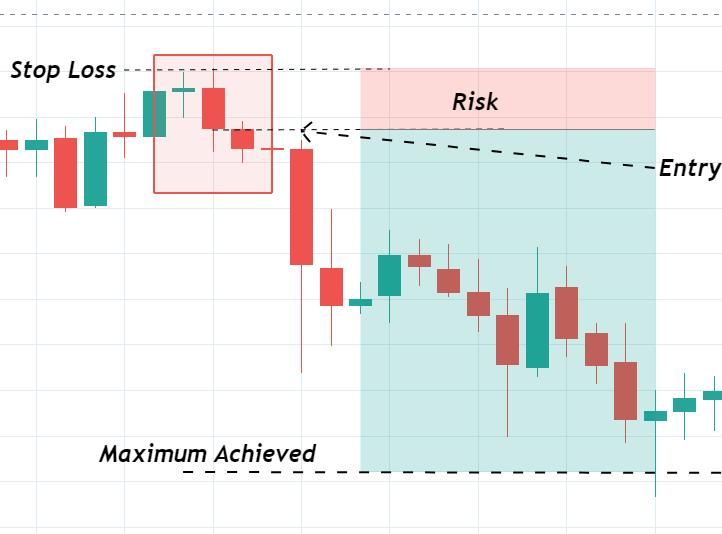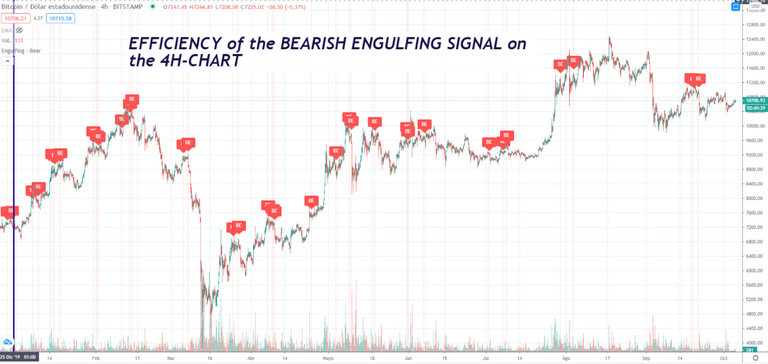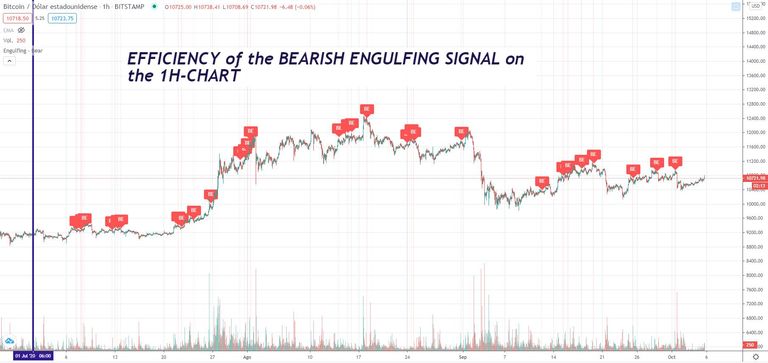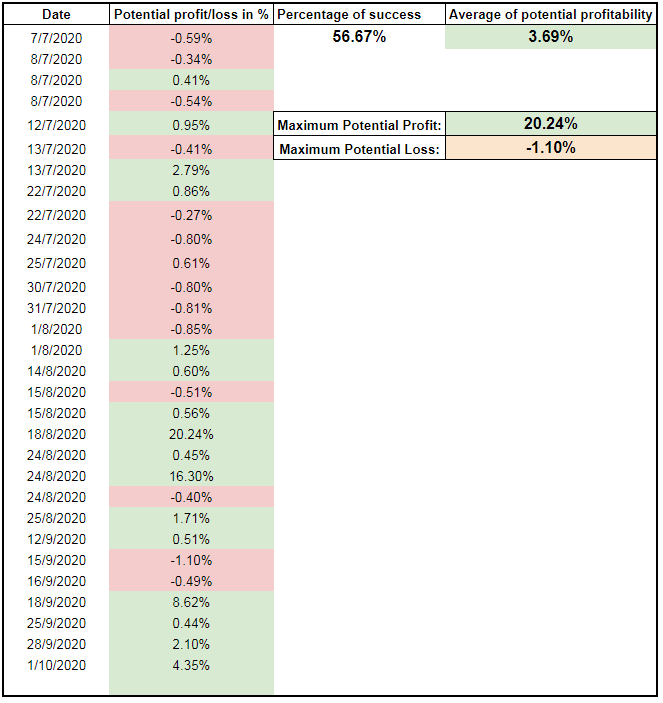After having assessed the most common Bullish Candlestick Patterns during the past days, you can find a list of my findings at the bottom of this post, now I am interested on the most common Bearish Candlestick Patterns.
As usual, there are several patterns, but nothing regarding how efficient they used to be.
Some of the most famous are the "Shooting Star" , the "Hanging Man" , the "Gravestone Doji" and the "Bearish Engulfing".
At First sight, from those 4 Bearish Candlestick, the one that present more recurrence in time is the "Bearish Engulfing". Apparently, this one is also the most powerful in detecting reversal moves on a chart.
As usual on my posts about the topic, I will asses this candlestick pattern according to the following assumptions:
- Entry done on the opening of the next candle after identifying the pattern (see below "entry")
- VERY IMPORTANT: Risk of Loss limited always to the top of the previous candle of the pattern (see below "Stop Loss"). The assumption is to set a stop loss always there, limiting the risk but it could be different depending on your risk management.
- The profitability of the pattern is taken as the maximum achieved before reaching above the Stop Loss, of course, it depends on the trader to close position depending on other observations or targets but, here, I just want to see the potential of the indication not the real output.

Assessment on the 4-Hours Chart since Beginning of 2020.

As you can see in above chart, there are 31 signals regarding Bearish Engulfing. From them, 23 get a Positive Output (profitables) while 8 were failures (Loss):

I keep the following data as the most important:
- Percentage of Success indicator: 74.19%
- Average of Potential profitability: 9.11%
- Reward/Risk ratio: I would take the average potential profitability divided by the maximum potential loss (remember that is cut due to our stop loss assumption explained before) = 3.94 so, for every USD you put under risk you might can obtain 3.94 USD
Assessment on the 1-Hour Chart since early July of 2020.
Again in this time frame , we have plenty of signals.

Conversely, the percentage of "Failure" is increased:

- Percentage of Success indicator: 56.67%
- Average of Potential profitability: 3.69%
- Reward/Risk ratio: I would take the average potential profitability divided by the maximum potential loss (remember that is cut due to our stop loss assumption explained before) = 3.36 so, for every USD you put under risk you might can obtain 3.36 USD
Summary

Definitely, the use of this indicator on the 4-hour chart provided good results in the past and looks like has a High likelihood of success, however I would disregard the use of this indicator on the Hourly chart, the percentage of success is disappointing and does not look as a good indicator in order to take it seriously.
This assessment just provide some more light on the statistical output of a famous pattern. I will try to complete the assessment with more data as soon as they appear.
Hope you have enjoy it.
Other Related Posts:
Other Related Posts:
- Candlestick Patterns: How efficient is the Bullish Engulfing Pattern on BTC trading?
- Candlestick Patterns: How efficient is the Bullish Hammer Candlestick on BTC trading?
- Candlestick Patterns: How efficient is the "Inverted Hammer" Candlestick on BTC trading?
- Efficiency of the RSI indicator as unique trading tool on BTC/USDT pair
- Efficiency of the Bollinger Bands indicator as unique trading tool on BTC/USDT pair
I'm sharing only my quick trading Ideas here, not financial advice at all ;-)
*Disclaimer: This is just my personal point of view, please, do your own assessment and act consequently. Neither this post nor myself is responsible of any of your profit/losses obtained as a result of this information.